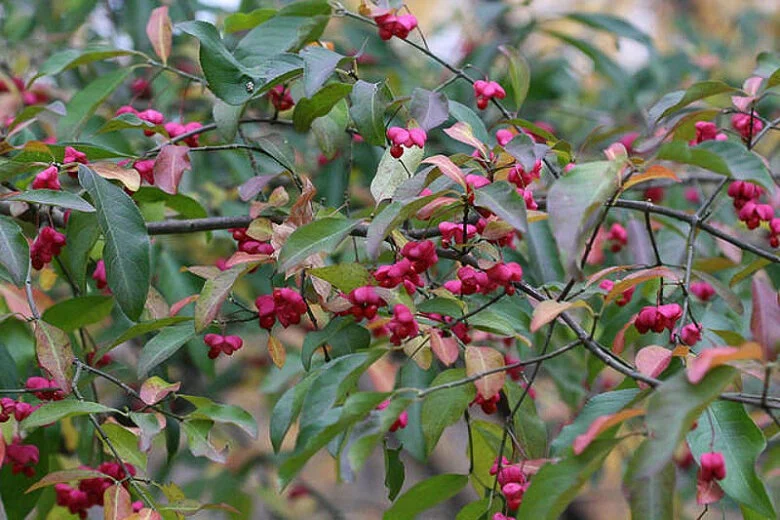The Wahoo
In the Garden with Andrew
Andrew Bunting. Photo courtesy of the Pennsylvania Horticultural Society.
Last Friday, the volunteer Friends of Little Crum Creek Park convened for work. Our goal was removing invasive plants such as Norway maple, Acer platanoides; Amur honeysuckle, Lonicera maackii; and the burning bush, Euonymus alatus. We were discussing some good native alternatives to these plants when I thought of a counterpart to the burning bush: Euonymus atropurpureus, the Eastern wahoo. Unlike burning bush, which has choked out most of the understory in parts of Eastern forests, this shrub is not invasive.
In my line of work, knowing the botanical name (genus and specific epithet) is more important than knowing the common name, but I love the array of interesting common names that often vary by region. For example, locally, Nyssa sylvatica is typically called black gum, sour gum, or tupelo, although I have also heard it called pepperidge. On Martha’s Vineyard, it is called the beetlebung tree.
I have always loved the name Wahoo. I first heard it as the nickname for the Hall of Fame Detroit Tiger Wahoo Sam Crawford, who hailed from Wahoo, Nebraska. Having Cornhusker roots myself, I have always known a little bit about that town, population 4,500. Amazingly, it has produced not only a Hall of Fame baseball player but a Nobel Prize laureate, George Beadle; a Pulitzer Prize-winning composer and conductor, Howard Hanson; and an Academy Award winning producer, writer, director and actor, Darryl Zanuk!
Wahoo, Nebraska, is due west of Omaha and north of Lincoln. Euonymus atropurpureus, the Eastern wahoo, derives its common name from part of its native habitat: It grows on the banks of Wahoo’s Wahoo Creek. “Wahoo” comes from “wg hu” — Dakota Indian words for “arrow wood.” Interestingly, geographic distribution charts for the wild populations of the wahoo show that Wahoo, Nebraska, is practically the westernmost edge of its range. Scattered throughout southeastern Pennsylvania, Euonymus atropurpureus is also found from Virginia to New York and as far to the southwest as Arkansas and northeast Texas. A shrubbier, related species, Euonymus americanus, parades under many of the same common names.
Euonymus atropurpureus, the Eastern wahoo
The Eastern wahoo is typically a forest understory shrub, but it can also be found in open woodlands and meadows, as well as on stream banks. The deciduous shrub can reach 15-20 feet tall and is generally higher than it is wide. Like its invasive counterpart Euonymus alatus, it offers vibrant fire-engine-red fall color, especially in the sun. In the shade, however, it will show a suffusion of pinks and reds. It is also commonly called the strawberry bush and “hearts bursting with love,” both names referring to the fruits. In the fall, four-lobed fruits that look like small strawberries turn pink. When ripe, they split open revealing small seeds covered with shiny red arils that hang from a thin appendage — hence “hearts bursting.” While the fruit is poisonous to humans, it is a food source for many species of local and migratory birds.
In the garden, wahoo can be grown as a multi-stemmed shrub or can be limbed up into a small tree. Spindly and narrow, it can be grown with understory shrubs like Fothergilla x intermedia, native azaleas, Hydrangea arborescens, and Hydrangea quercifolia.
Adapted to myriad conditions in its native habitats, the accommodating Eastern wahoo will flourish in the garden in both sun and shade, and in both moist and dry conditions.
Send your gardening questions to editor@swarthmorean.com. Put “Garden” in the subject line.
Andrew Bunting is vice president of public horticulture at the Pennsylvania Horticultural Society and vice president of the Swarthmore Horticultural Society.




